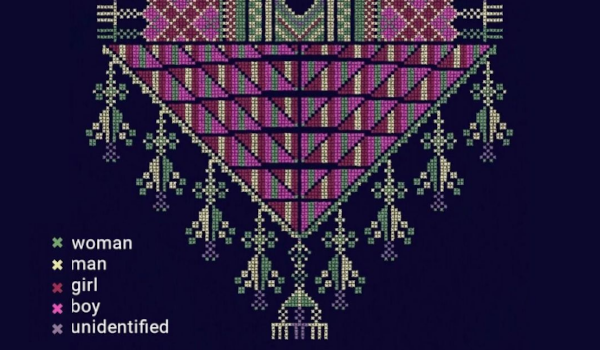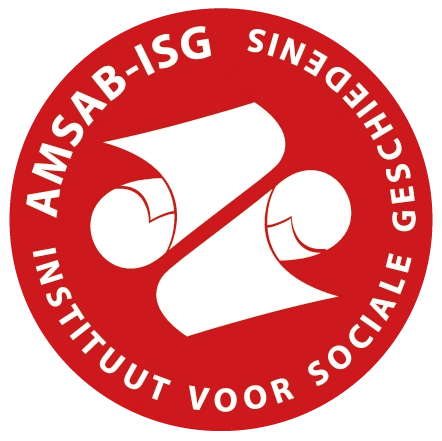Sinds 7 oktober 2023 heeft de Israëlische bezetting al meer dan 10.000 Palestijnen in de Gazastrook en erbuiten gedood. 10.000 mensen die hun leven zijn verloren, mannen, vrouwen en kinderen wiens hoop en dromen tot stof zijn vergaan, talloze families die verder zijn verscheurd.
Cijfers verdoezelen de mensen die erachter schuilen. Het ontwerp van de Palestijnse designer Maha Amer herdenkt de slachtoffers van de maand oktober in de bovenstaande visualisatie. Ze grijpt hiervoor terug naar de Palestijnse borduurtraditie, tatreez. Elke kruissteek in het werk representeert een uitgedoofd mensenleven, allen met elkaar verweven.
Tatreez is internationaal erkend Palestijns erfgoed dat zijn wortels vindt in de oude Kanaänitische cultuur van de Levant. Traditioneel ging het om een kunstvorm vooral uitgeoefend en gedragen door vrouwen in de rurale dorpen van Palestina. Elk dorp en elke regio had zijn eigen motieven en patronen, zodanig dat een vrouw met haar geborduurde thob (kleed) aan alle toeschouwers een verhaal kon brengen over haar afkomst, haar klasse en haar huwelijksstatus.
Na de gedwongen volksverhuizingen ten gevolge van de Nakba in 1948 verloren naast talloze Palestijnse families ook de tatreez-patronen de verbondenheid met hun plaats van oorsprong. Toch bleef de kunst voortbestaan, ze symboliseerde onder bezetting, in vluchtelingenkampen en in de diaspora op termijn de Palestijnse identiteit in haar geheel. Daarom is het borduren, dragen en bewaren van tatreez-patronen vandaag een vorm van politiek verzet, een bevestiging van de Palestijnse identiteit in het oog van een macht die deze wilt uitroeien.
Een uitzondering op meer openbare vormen van tatreez is de geborduurde kaart van Palestina, die vandaag in talloze Palestijnse huizen hangt, over de wereld heen, en dus voornamelijk bedoeld voor de private sfeer. In verschillende variaties vullen de oude patronen of de oorspronkelijke Arabische stads- of dorpsnamen het volledige grondgebied van Palestina. Ze symboliseren het collectieve streven naar het recht van terugkeer, naar een thuis dat hen werd ontnomen.

Dat we een dergelijke kaart zien op een protest in Brussel, wijst op de wanhoop. De geborduurde kaart is een symbool van menselijkheid, van het recht op een thuis, op een bestaan. Het voortbestaan van tatreez en de publieke vertoning ervan, is een van de vele uitingsvormen van de Palestijnse sumud, of vastberadenheid tegen onderdrukking. Toch worden deze, en talloze andere vormen van vredig protest, compleet genegeerd.
Hoeveel doden moeten er nog vallen voor er een einde komt aan deze massamoord, en voor de de decennialange kreet van de Palestijnen wordt beantwoord?

| Amsab-ISG toonde al eerder borduurwerken als sociale kunst, met tentoonstellingen over een Congolese kunstenares die het koloniale verleden verbeeldt in borduurwerken en over Syrische vrouwen in het vluchtelingenkamp Shatila. Op 11 december 2023 opent een nieuwe tentoonstelling met Chileense borduurwerken als verzet tegen een dictatoriaal regime. Geschiedenis herhaalt zichzelf, helaas. |








